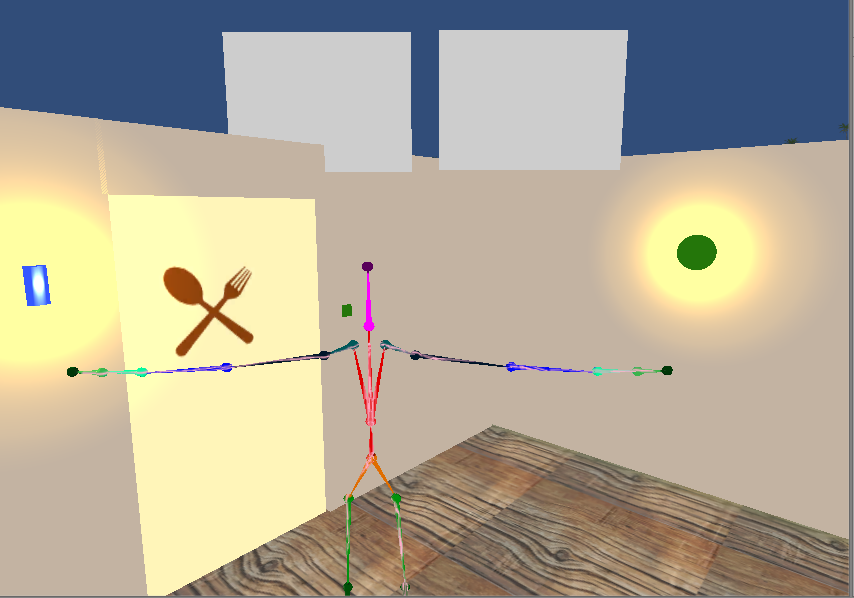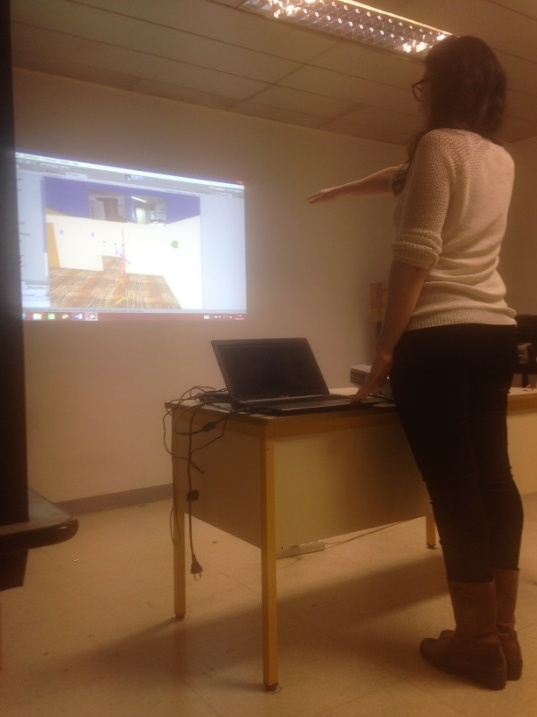- Partager cette page :
- Version PDF
Projet1 - Master2 CSER 2015
Ambient assistance: Pointing assistance
Research project
(Laboratory LISV, University of Versailles Saint-Quentin-en-Yvelines)
(Laboratory LISV, University of Versailles Saint-Quentin-en-Yvelines)
Nowadays, assisting objects get more and more present in our environment. This surrounding assistance project is carried out by students of the Electric Systems & Robotics Sensors M2. It will justify the need of this assistance thanks to two field works made in different virtual environments.
Each environment will include a certain amount of objects divided in different categories. In the second test, these objects will follow a specific assisting type depending on these categories, whereas none assistance will be available in the first test.
Each environment will include a certain amount of objects divided in different categories. In the second test, these objects will follow a specific assisting type depending on these categories, whereas none assistance will be available in the first test.
 Picture 1 : The avatar is in front of assistance objects like the kitchen door which shows where you will be if you use it. At its right, you can see an assistant button which colour is the same than the light it lightens. |
 Picture 2 : During the tests, users have to point a specific object |
Both environments are virtual ones: they were modelized thanks to Unity 3D. The user will navigate via an avatar that mimics his moves thanks to a Kinect sensor. Its will help us for the monitoring of the human pointing. In each environment we will have a pointing assistance which will recognize when the user will point an object.
Statistics will be saved during the tests and, thanks to their analysis, we will know in which of the 2 environments, it is easier to use a specific object. For example when we will ask the user to open the kitchen door, we will see if he spotts it more easily in the environment without assistance or in the environment with assistance.
A satisfaction survey will also be available after the tests. If the results show that the user evolves more efficiently in an assisted environment, we would have proven the assistance benefits.
Contact : aloysia.de.longvilliers@gmail.com / eric.monacelli@uvsq.fr
Statistics will be saved during the tests and, thanks to their analysis, we will know in which of the 2 environments, it is easier to use a specific object. For example when we will ask the user to open the kitchen door, we will see if he spotts it more easily in the environment without assistance or in the environment with assistance.
A satisfaction survey will also be available after the tests. If the results show that the user evolves more efficiently in an assisted environment, we would have proven the assistance benefits.
Contact : aloysia.de.longvilliers@gmail.com / eric.monacelli@uvsq.fr







